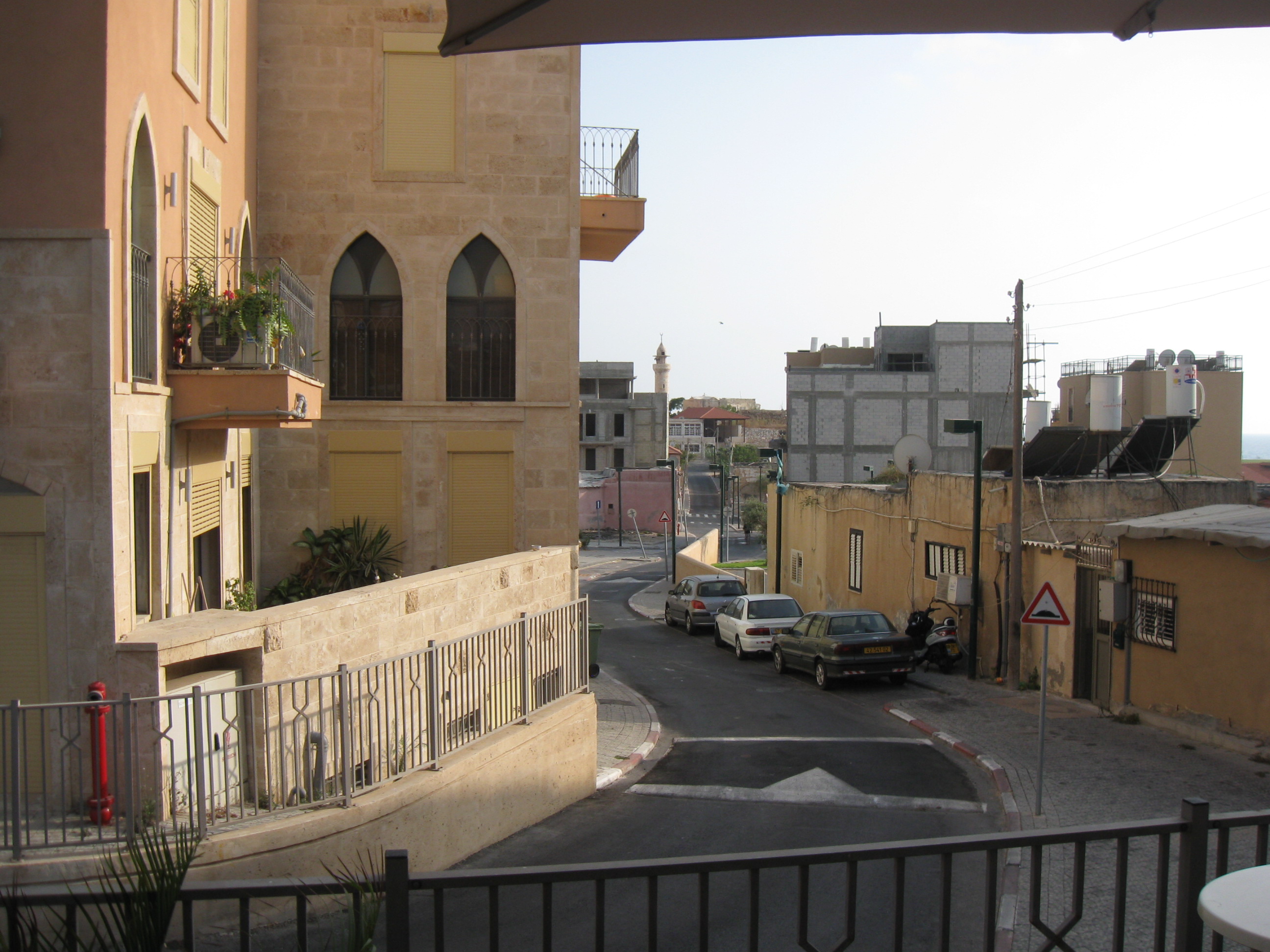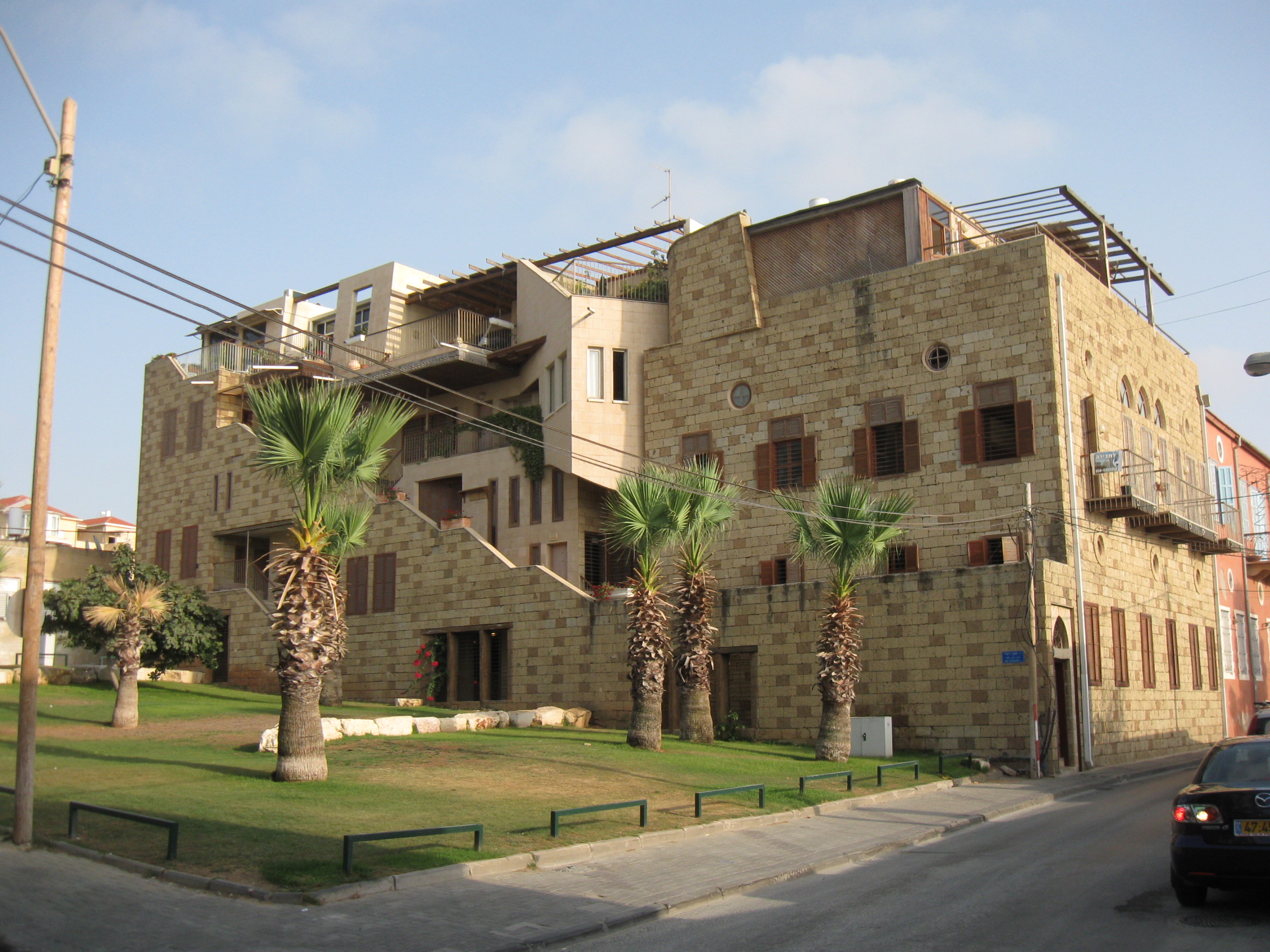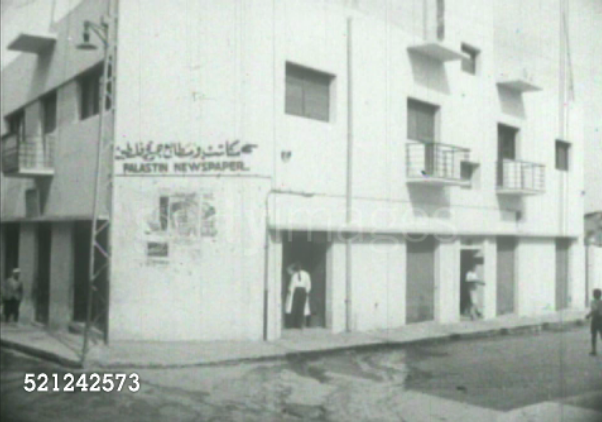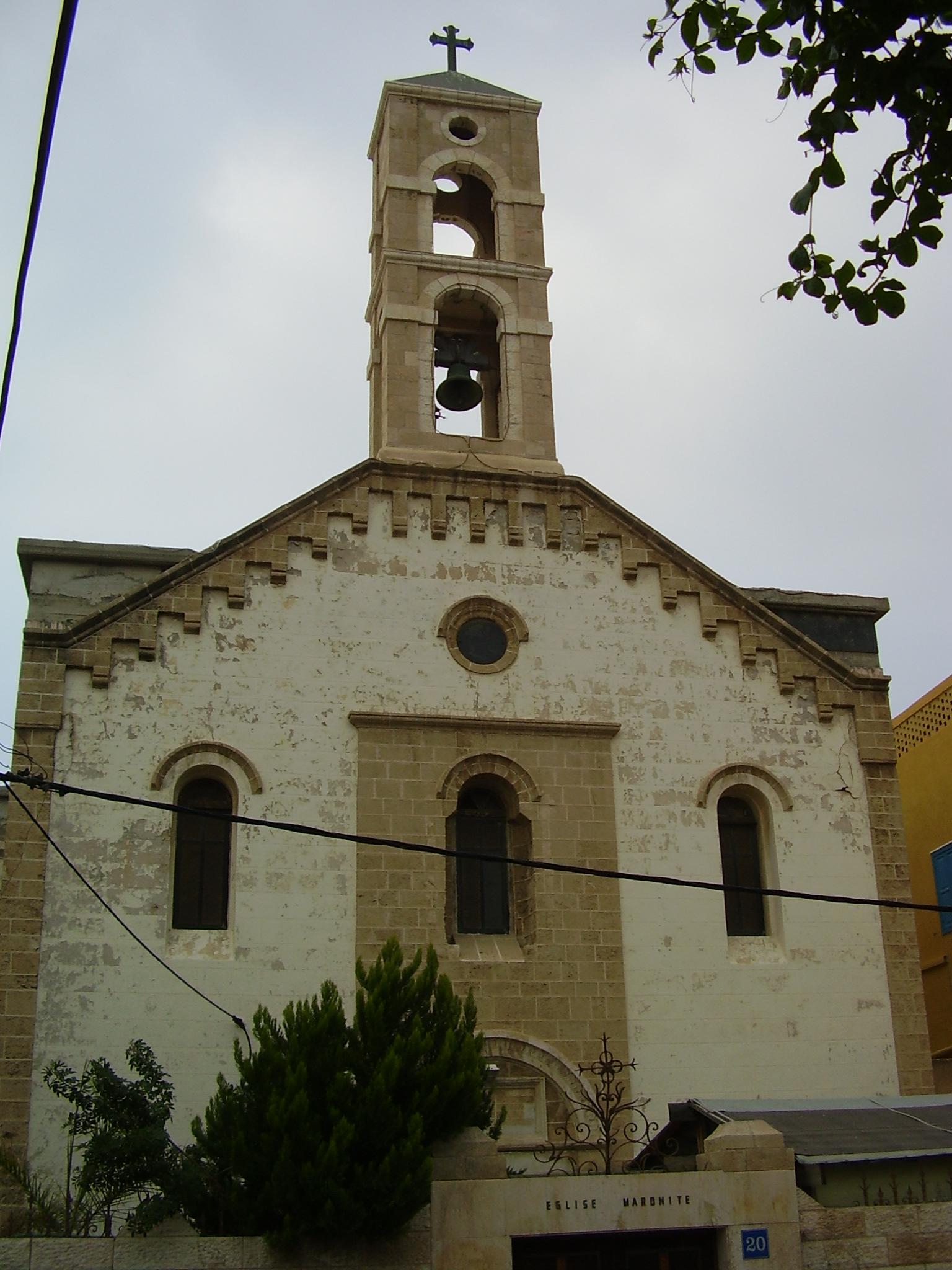Ajami, Jaffa on:
[Wikipedia]
[Google]
[Amazon]
 Ajami ( ar, العجمي, he, עג'מי) is a predominantly Arab neighborhood in
Ajami ( ar, العجمي, he, עג'מי) is a predominantly Arab neighborhood in

 Ajami was founded during Ottoman rule over Palestine at the end of the 19th century, as a small
Ajami was founded during Ottoman rule over Palestine at the end of the 19th century, as a small
Israel Traveler, Retrieved 2013-12-09. in the middle of Ajami neighborhood.''Hayy al-'Ajami''
. ArchNet. Retrieved 2013-12-09. The neighborhood’s houses were built from limestone surrounded by large courtyards, reflecting the economic ability of its Maronite residents. Being an affluent residential area of the upper middle-class, Ajami had been the first neighborhood of Jaffa – in fact in the whole of Palestine - to be swiftly and fully connected to the new electric grid which had been built by the Jaffa Electric Company in 1923
 Despite these socio-economic problems and the neighborhood's severe housing crisis, the Tel Aviv-Yafo municipality drew up plans to develop the neighborhood, which subsequently increased housing prices and led to the exodus of a growing number of Palestinian residents. Many of Ajami's Arab residents feel that they have come to suffer under Tel Aviv-Yafo's Municipality's plans to 'develop' the neighborhood. Since the start of the gentrification process, many wealthy Jewish Israelis have moved into the neighborhood.
In addition, some 497 eviction and demolition orders have been served by the Amidar, Israel's government-operated public housing company, targeting Ajami and Jabaliyya residents. Ajami residents claim that this is a result of discriminatory policies which date back to the establishment of the Israeli state, but the Amidar company says they are illegal squatters.
The housing crisis developed political overtones when one of the housing projects, B'emuna, said its apartments would be sold only to members of the religious-Zionist community. In February 2010, the Tel Aviv District Court dismissed a stop work petition presented by 27 Ajami residents, which argued that the stipulation that housing in the project be available only to religious Jews discriminated against the neighborhood’s Arab residents. In November 2010, the Supreme Court of Israel rejected the appeal and upheld the continuation of the project.
Despite these socio-economic problems and the neighborhood's severe housing crisis, the Tel Aviv-Yafo municipality drew up plans to develop the neighborhood, which subsequently increased housing prices and led to the exodus of a growing number of Palestinian residents. Many of Ajami's Arab residents feel that they have come to suffer under Tel Aviv-Yafo's Municipality's plans to 'develop' the neighborhood. Since the start of the gentrification process, many wealthy Jewish Israelis have moved into the neighborhood.
In addition, some 497 eviction and demolition orders have been served by the Amidar, Israel's government-operated public housing company, targeting Ajami and Jabaliyya residents. Ajami residents claim that this is a result of discriminatory policies which date back to the establishment of the Israeli state, but the Amidar company says they are illegal squatters.
The housing crisis developed political overtones when one of the housing projects, B'emuna, said its apartments would be sold only to members of the religious-Zionist community. In February 2010, the Tel Aviv District Court dismissed a stop work petition presented by 27 Ajami residents, which argued that the stipulation that housing in the project be available only to religious Jews discriminated against the neighborhood’s Arab residents. In November 2010, the Supreme Court of Israel rejected the appeal and upheld the continuation of the project.

 First established in 1895, by Father Antonios Shbeir Ghostaoui, a monk from the
First established in 1895, by Father Antonios Shbeir Ghostaoui, a monk from the
 The Ajami Mosque was established by Haj Yousef-Al-Manawi in 1895 on the shrine of Sheikh Ibrahim-Al-Ajami. It is located in the northern part of Ajami next to the Hassan Arafeh public school. Under British rule, Ajami Mosque was the only mosque open for daily prayers. The mosque and the adjoining school were previously owned by the Islamic
The Ajami Mosque was established by Haj Yousef-Al-Manawi in 1895 on the shrine of Sheikh Ibrahim-Al-Ajami. It is located in the northern part of Ajami next to the Hassan Arafeh public school. Under British rule, Ajami Mosque was the only mosque open for daily prayers. The mosque and the adjoining school were previously owned by the Islamic
 Ajami is the location of the Jaffa AJCC, a municipal community center in Tel Aviv-Yafo catering to Jewish, Christian, and Muslim populations in the city. The center was established in 1993, bringing together conflicting populations and educating towards reconciliation, recognition and cooperation. Both facilitated and unmediated encounters take place at the center between members of Jaffa’s diverse ethnic and age groups, including children from Jewish and Arab kindergartens, elementary and high school students, and adults.
Ajami is the location of the Jaffa AJCC, a municipal community center in Tel Aviv-Yafo catering to Jewish, Christian, and Muslim populations in the city. The center was established in 1993, bringing together conflicting populations and educating towards reconciliation, recognition and cooperation. Both facilitated and unmediated encounters take place at the center between members of Jaffa’s diverse ethnic and age groups, including children from Jewish and Arab kindergartens, elementary and high school students, and adults.
 The
The

The Peres Center for Peace
Arab Jewish Community Center's Official Website
Remembering Yafa`s al-Ajami Neighborhood
08/2007,
 Ajami ( ar, العجمي, he, עג'מי) is a predominantly Arab neighborhood in
Ajami ( ar, العجمي, he, עג'מי) is a predominantly Arab neighborhood in Tel Aviv-Yafo
Tel Aviv-Yafo ( he, תֵּל־אָבִיב-יָפוֹ, translit=Tēl-ʾĀvīv-Yāfō ; ar, تَلّ أَبِيب – يَافَا, translit=Tall ʾAbīb-Yāfā, links=no), often referred to as just Tel Aviv, is the most populous city in the ...
, Israel
Israel (; he, יִשְׂרָאֵל, ; ar, إِسْرَائِيل, ), officially the State of Israel ( he, מְדִינַת יִשְׂרָאֵל, label=none, translit=Medīnat Yīsrāʾēl; ), is a country in Western Asia. It is situated ...
, situated south of Old Jaffa
Old Jaffa ( he, יפו העתיקה afa ha'atiká– Ancient Yafo; ar, يافا العتيقه afa al.ʿatīqa– Ancient Jaffa or afa al.qadīma– Old Jaffa ) is a neighborhood of Tel Aviv-Yafo, Israel and the oldest part of Jaffa. A ne ...
and north of the Jabaliyya neighborhood on the Mediterranean Sea
The Mediterranean Sea is a sea connected to the Atlantic Ocean, surrounded by the Mediterranean Basin and almost completely enclosed by land: on the north by Western and Southern Europe and Anatolia, on the south by North Africa, and on the ...
.
Etymology
The neighborhood was named after Ibrahim al-Ajami, one of prophetMuhammad's companions
The Companions of the Prophet ( ar, اَلصَّحَابَةُ; ''aṣ-ṣaḥāba'' meaning "the companions", from the verb meaning "accompany", "keep company with", "associate with") were the disciples and followers of Muhammad who saw or m ...
. According to a tradition, he was buried in the south of the neighborhood. A mosque constructed at the site in 1895, al-Ajami, is named for him.
History
Ottoman and British eras

 Ajami was founded during Ottoman rule over Palestine at the end of the 19th century, as a small
Ajami was founded during Ottoman rule over Palestine at the end of the 19th century, as a small Maronite Christian
Lebanese Maronite Christians ( ar, المسيحية المارونية في لبنان; syc, ܡܫܝܚܝ̈ܐ ܡܪ̈ܘܢܝܐ ܕܠܒܢܢ) are adherents of the Maronite Church in Lebanon, which is the largest Christian denomination in the country ...
settlement. The neighborhood's streets were laid parallel to the coast, with ample houses and small stairway-alleys leading down to the shore. A Maronite monastery and church founded in 1855, stood in the nearby harbor. In 1895, Father Antonios Shbeir Ghostaoui, a monk from the Lebanese Maronite Order
The Baladites, formally known as the Lebanese Maronite Order (; abbreviated OLM), is a monastic order among the Levant-based, Catholic Maronite Church, which from the beginning has been specifically a monastic Church. The order was founded in 16 ...
, built a new church and a monastery on an area of 1,600 square meters. Later on, between 1901 and 1920, the church was demolished and replaced by a bigger and more attractive one, the first stone of which was laid during a grand ceremony on February 28, 1904. This Maronite church still stands today, and it is located in the south tip of Dolphin Street,''The Maronite church Jaffa''Israel Traveler, Retrieved 2013-12-09. in the middle of Ajami neighborhood.''Hayy al-'Ajami''
. ArchNet. Retrieved 2013-12-09. The neighborhood’s houses were built from limestone surrounded by large courtyards, reflecting the economic ability of its Maronite residents. Being an affluent residential area of the upper middle-class, Ajami had been the first neighborhood of Jaffa – in fact in the whole of Palestine - to be swiftly and fully connected to the new electric grid which had been built by the Jaffa Electric Company in 1923
1947–1948 war
Ajami played a significant role in the history of Jaffa including the 1947–1949 Palestine war and the events of theNakba
Clickable map of Mandatory Palestine with the depopulated locations during the 1947–1949 Palestine war.
The Nakba ( ar, النكبة, translit=an-Nakbah, lit=the "disaster", "catastrophe", or "cataclysm"), also known as the Palestinian Ca ...
. Following the decision by the British Government to end the Mandate for Palestine, violence erupted between the Jewish paramilitary groups ( Haganah and Irgun
Irgun • Etzel
, image = Irgun.svg , image_size = 200px
, caption = Irgun emblem. The map shows both Mandatory Palestine and the Emirate of Transjordan, which the Irgun claimed in its entirety for a future Jewish state. The acronym "Etzel" i ...
) and Palestinian Arab irregulars. Jaffa witnessed some of the most violent of these encounters. On May 13, 1948, the day before the declaration of the Israeli state, Jaffa surrendered the remaining Arab residents were forced to move into Ajami, where they were subject to martial law. By the end of the war, it is estimated that over 90% of Jaffa's Palestinian Arab
Palestinians ( ar, الفلسطينيون, ; he, פָלַסְטִינִים, ) or Palestinian people ( ar, الشعب الفلسطيني, label=none, ), also referred to as Palestinian Arabs ( ar, الفلسطينيين العرب, label=non ...
residents fled. Some 3,000 remained in Jaffa.
State of Israel
After the establishment of the State of Israel, the Israeli government tried to separate Jews and Palestinians of Jaffa: “It will be best to have special areas for the Jews and areas for the Arabs,” said the military governor Meir Laniado. Palestinians were moved to Ajami, which was surrounded on all sides by Jewish quarters. Moshe Erem from the Israeli Ministry for Minority Affairs protested to Minister Bechor-Shalom Sheetrit: “Ajami is about to be closed off with abarbed-wire
A close-up view of a barbed wire
Roll of modern agricultural barbed wire
Barbed wire, also known as barb wire, is a type of steel fencing wire constructed with sharp edges or points arranged at intervals along the strands. Its primary use is ...
fence that will rigorously separate the Arab neighborhood and the Jewish section. That arrangement will immediately render Ajami a sealed-off ghetto
A ghetto, often called ''the'' ghetto, is a part of a city in which members of a minority group live, especially as a result of political, social, legal, environmental or economic pressure. Ghettos are often known for being more impoverished t ...
. It is hard to accept this idea, which stirs in us associations of excessive horror. … And once more we are thereby sowing a toxic seed … in the heart of the Arabs. A ghetto in barbed wire, a ghetto, cut off from access to the sea. Shall this be our political approach?” Palestinians needed special permits “to exit the barbed wire.”
Over the years, Ajami became run-down and neglected, and was reported to be the lowest-income neighborhood in Tel Aviv-Yafo despite being known for its palatial villas and unique architectural styles prior to 1948. The neighborhood suffers from a severe housing crisis and drug-use.
Gentrification projects
 Despite these socio-economic problems and the neighborhood's severe housing crisis, the Tel Aviv-Yafo municipality drew up plans to develop the neighborhood, which subsequently increased housing prices and led to the exodus of a growing number of Palestinian residents. Many of Ajami's Arab residents feel that they have come to suffer under Tel Aviv-Yafo's Municipality's plans to 'develop' the neighborhood. Since the start of the gentrification process, many wealthy Jewish Israelis have moved into the neighborhood.
In addition, some 497 eviction and demolition orders have been served by the Amidar, Israel's government-operated public housing company, targeting Ajami and Jabaliyya residents. Ajami residents claim that this is a result of discriminatory policies which date back to the establishment of the Israeli state, but the Amidar company says they are illegal squatters.
The housing crisis developed political overtones when one of the housing projects, B'emuna, said its apartments would be sold only to members of the religious-Zionist community. In February 2010, the Tel Aviv District Court dismissed a stop work petition presented by 27 Ajami residents, which argued that the stipulation that housing in the project be available only to religious Jews discriminated against the neighborhood’s Arab residents. In November 2010, the Supreme Court of Israel rejected the appeal and upheld the continuation of the project.
Despite these socio-economic problems and the neighborhood's severe housing crisis, the Tel Aviv-Yafo municipality drew up plans to develop the neighborhood, which subsequently increased housing prices and led to the exodus of a growing number of Palestinian residents. Many of Ajami's Arab residents feel that they have come to suffer under Tel Aviv-Yafo's Municipality's plans to 'develop' the neighborhood. Since the start of the gentrification process, many wealthy Jewish Israelis have moved into the neighborhood.
In addition, some 497 eviction and demolition orders have been served by the Amidar, Israel's government-operated public housing company, targeting Ajami and Jabaliyya residents. Ajami residents claim that this is a result of discriminatory policies which date back to the establishment of the Israeli state, but the Amidar company says they are illegal squatters.
The housing crisis developed political overtones when one of the housing projects, B'emuna, said its apartments would be sold only to members of the religious-Zionist community. In February 2010, the Tel Aviv District Court dismissed a stop work petition presented by 27 Ajami residents, which argued that the stipulation that housing in the project be available only to religious Jews discriminated against the neighborhood’s Arab residents. In November 2010, the Supreme Court of Israel rejected the appeal and upheld the continuation of the project.
Landmarks

The Maronite Church
 First established in 1895, by Father Antonios Shbeir Ghostaoui, a monk from the
First established in 1895, by Father Antonios Shbeir Ghostaoui, a monk from the Lebanese Maronite Order
The Baladites, formally known as the Lebanese Maronite Order (; abbreviated OLM), is a monastic order among the Levant-based, Catholic Maronite Church, which from the beginning has been specifically a monastic Church. The order was founded in 16 ...
, this Church replaced an even older church and monastery founded in 1855 and formerly located in the nearby harbor. The Maronite Church of Ajami is located in the south tip of Dolphin Street, in the middle the neighborhood.
Al-Ajami Mosque
 The Ajami Mosque was established by Haj Yousef-Al-Manawi in 1895 on the shrine of Sheikh Ibrahim-Al-Ajami. It is located in the northern part of Ajami next to the Hassan Arafeh public school. Under British rule, Ajami Mosque was the only mosque open for daily prayers. The mosque and the adjoining school were previously owned by the Islamic
The Ajami Mosque was established by Haj Yousef-Al-Manawi in 1895 on the shrine of Sheikh Ibrahim-Al-Ajami. It is located in the northern part of Ajami next to the Hassan Arafeh public school. Under British rule, Ajami Mosque was the only mosque open for daily prayers. The mosque and the adjoining school were previously owned by the Islamic Waqf
A waqf ( ar, وَقْف; ), also known as hubous () or '' mortmain'' property is an inalienable charitable endowment under Islamic law. It typically involves donating a building, plot of land or other assets for Muslim religious or charitab ...
, until the Israeli authorities annulled their status as Waqf property under Israel's Absentee's Property Law.
Arab-Jewish community center
 Ajami is the location of the Jaffa AJCC, a municipal community center in Tel Aviv-Yafo catering to Jewish, Christian, and Muslim populations in the city. The center was established in 1993, bringing together conflicting populations and educating towards reconciliation, recognition and cooperation. Both facilitated and unmediated encounters take place at the center between members of Jaffa’s diverse ethnic and age groups, including children from Jewish and Arab kindergartens, elementary and high school students, and adults.
Ajami is the location of the Jaffa AJCC, a municipal community center in Tel Aviv-Yafo catering to Jewish, Christian, and Muslim populations in the city. The center was established in 1993, bringing together conflicting populations and educating towards reconciliation, recognition and cooperation. Both facilitated and unmediated encounters take place at the center between members of Jaffa’s diverse ethnic and age groups, including children from Jewish and Arab kindergartens, elementary and high school students, and adults.
Peres Center for Peace
 The
The Peres Center for Peace
The Peres Center for Peace, located in Jaffa, Israel, is an independent non-profit, non-governmental, and non-political organization founded in 1996 by Nobel Peace Laureate and former President of Israel Shimon Peres. Its aim is to further Pere ...
, located in the southern tip of Ajami, opened in December 2009 after 10 years of planning and construction. The building (2,500 sq.m.), a distinctive architectural landmark on the Jaffa coast, was designed by Italian architect Massimiliano Fuksas
Massimiliano Fuksas (born January 9, 1944) is an Italian architect. He is the head of ''Studio Fuksas'' in partnership with his wife, Doriana Mandrelli Fuksas, with offices in Rome, Paris and Shenzhen.
Biography
Fuksas was born in Rome in 194 ...
.
Tourism and recreation
"The Old Man and the Sea" is a popular Arab seafood restaurant in the southern part of Ajami.Abu Hassan
''Abu Hassan'' ( J. 106) is a comic opera in one act by Carl Maria von Weber to a German libretto by , based on a story in ''One Thousand and One Nights''. It was composed between 11 August 1810 and 12 January 1811 and has set numbers with recita ...
is a small hummus restaurant located on the northern tip of Ajami. It was opened in 1959 by Ali Karawan and now has two additional branches in Jaffa.
Notable residents
Fakhry Geday, born in the Ajami neighborhood in 1926, is a pharmacist, owner of the Al-Kamal Pharmacy that has been in the same location from the time of the British Mandate. To neighborhood residents, it is a city landmark. Geday is writing a history of the neighborhood. Omar Siksik, also born in Ajami, owns a local hardware store. He is the founder and chair of the Committee for the Arabs of Jaffa, and was recently elected to represent Jaffa in Tel Aviv–Yafo Municipality's city council.Film
The 2009 Israeli film ''Ajami
''Ajam'' ( ar, عجم, ʿajam) is an Arabic word meaning mute, which today refers to someone whose mother tongue is not Arabic. During the Arab conquest of Persia, the term became a racial pejorative. In many languages, including Persian, Tu ...
'' directed by Scandar Copti and Yaron Shani was nominated as a foreign language film for the 2010 Academy Awards. Many characters in the film were played by non-professional actors who live in Ajami.

References
External links
The Peres Center for Peace
Arab Jewish Community Center's Official Website
Remembering Yafa`s al-Ajami Neighborhood
08/2007,
Zochrot
Zochrot ( he, זוכרות; "Remembering"; ar, ذاكرات; "Memories") is an Israeli nonprofit organization founded in 2002. Based in Tel Aviv, its aim is to promote awareness of the Palestinian ''Nakba'' ("Catastrophe"), including the 1948 Pa ...
{{Neighborhoods of Tel Aviv
Neighborhoods of Tel Aviv
Arab localities in Israel